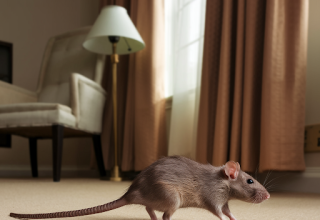Intro:
Office interior design impacts employees, customers, and maintenance. It also adds to a company’s culture. The interior blueprint you follow for your office depends on its size, starting point, and whether clients visit you.
Here we take a look at five office interior design tips and tricks based on office type.
1. Home Office
The year 2020 saw the rise of home offices. People scurried to find the perfect spot to work within their house. By many accounts, these new remote workers figured it out.
If you’re still working on perfecting your home’s office design, ensure that you found the right spot first. This space requires easy access to electrical outlets, natural light, and sufficient privacy.
Next, pick an interior design style. Sometimes your career field determines that for you. If you work in technology, opt for modern, minimalist, or traditional. Individuals who participate in several video conferencing calls benefit from decor conducive to a corporate environment.
Now, invest in a chair and desk. Add a bookshelf and lamp. Finish the home office interior design with a set of drawers for storage. If you need to create privacy, pick up a set of partitioners; they come in handy as backdrops for video conferencing meetings too.
2. Small Business Office
It’s one thing to decorate a home office for yourself; it’s another when you’re decorating an office where other employees work too.
Now the design incorporates the needs of employees. If you’re a startup, your budget is tight. Nonetheless, improving the lighting and adding some art provides enough design to start creating a company culture.
For established small companies, consider a redesign. Update the paint with a fresh coat, upgrade your current storage, and add a rug near the entryway for texture.
If your office is small, keep the interior design simple. Ergo-friendly chairs, desks, and tables improve productivity among staff members.
Small business offices that have access to a private kitchen area should stock it with kitchenware and cleaning supplies.
The jury is still out on whether cubicles or an open office plan work best. In this case, let your company’s culture decide the best option.
3. Office that Receives Clients
Interior design is important for any business office that receives clients onsite, especially for the lobby, reception area, and conference room. Even a startup needs to create a professional and welcoming environment that invites customers, suppliers, and potential business partners.
Acquire enough comfortable chairs and strategically place them where you will speak with visitors. Keep the reception area free of clutter and professional, but give the reception a desk and lamp. Add art to the walls and prominently display your company name and logo.
Ensure that these areas receive enough illumination. Whether you improve the overhead lights or add lamps, always have enough light. If your office receives natural light, maximize it. Dress the windows with professional curtains and blinds.
The reception area is a great spot to place an antique rug. Luxury rugs become a piece of art that visitors notice almost immediately. To see a selection of antique rugs, see the options provided by Lawrence of La Brea here.
4. Office on an Industrial Property
It’s easy to skip on interior design for companies in the industrial and manufacturing sectors. However, it’s beneficial for these companies to place additional effort in sprucing up the office areas.
Industrial and manufacturing visitors understand that the work completed at these sites isn’t the cleanest. It’s not a reason to let it reflect in the offices, conference rooms, or reception area.
Assess the current condition of these spaces. A new coat of paint, desks, and chairs provide a comfortable place for employees to work and visitors to visit.
Business professionals who need help with their company’s interior design have access to designers and architects. Both make the design process easier thanks to their expertise.
The proximity to heavy machinery, noise, and smells pose a challenge for employees. Professionals in commercial interior design overcome them.
5. Corporation Office
Some interior design firms report that their minimum furnishing budget is $50,000. This becomes a significant expense for small and mid-sized companies. For corporations, it’s different.
A corporate office reflects the state of its company. Thus, interior design becomes an investment, not an expense.
Corporate interior design requires the help of professionals. It takes experience, connections, and organization to design several offices, conference rooms, and the lobby.
Common elements for this project include hanging art on the walls, adding rugs to open spaces, and acquiring comfortable chairs for employees. After picking out a design theme that incorporates the corporation’s branding, keeping the style consistent is the next challenge.
A professional makes the process easier.
Conclusion
When you design your office, take into consideration several factors. It helps create an environment for productivity. The design also encourages seamless interaction with customers. Once you determine the extent of the project, you can start with the above tips and tricks.














